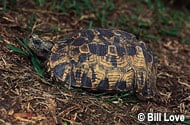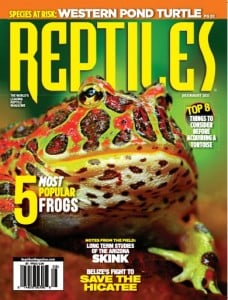Bell’s Hingeback Tortoise
Central and southern Africa from southern Senegal to Mozambique and the eastern corner of South Africa. There is an introduced population in northern Madagascar.
The Bell’s hingeback tortoise has a huge native range and consists of up to 5 races. It is currently not commonly seen in captivity because of a recent ban on importation of these into the United States due to a parasite (tick) which was found to carry a disease (heartwater) which affects cattle. There are some being produced in captivity. There is also one form that has been elevated from subspecies to full species status and as a result is not covered by the ban. These are now called Speke’s hingeback but did fall under the umbrella of the Bell’s hingeback until recently. These are currently being imported into the United States.
The hingeback tortoise derives its name from the presence of a unique hinge across the back third of the carapace which allows the tortoise to close the back end from the top.
The Bell’s hingeback seems to be an opportunistic feeder preferring dark leafy greens, vegetables, fleshy fruit in addition to the occasional insect and carrion.
They have a preferred temperature range of 75 degrees Fahrenheit with a basking spot of at least 90 degrees. They do seem to be more active at night than during the daylight hours.
Providing a substrate of mulch with and area of hay for them to burrow into will give them the security they seem to enjoy.
A water dish should be provided at all times.

